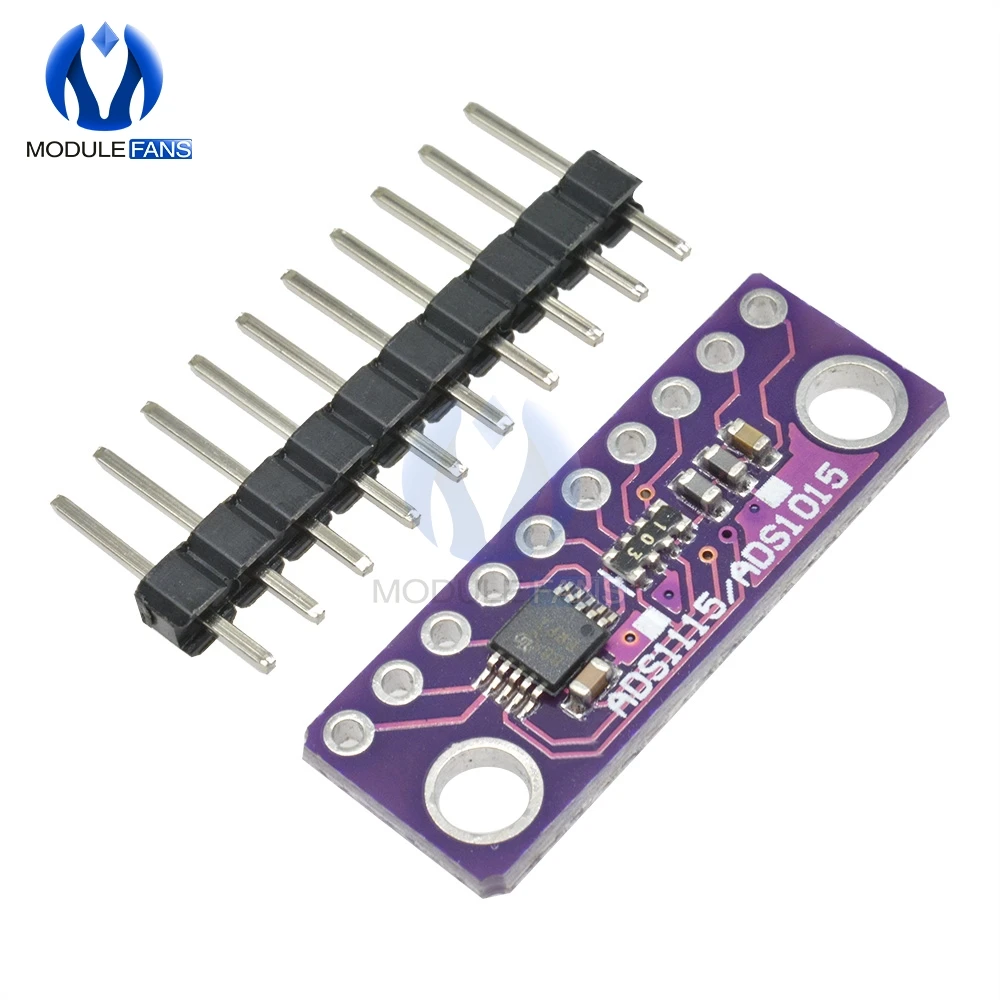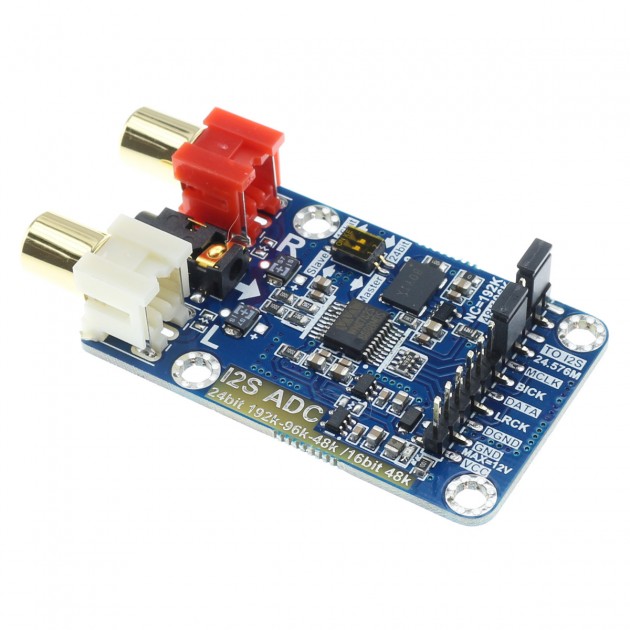

- #Analog to digital converter microcontroller serial#
- #Analog to digital converter microcontroller series#
The resolution Q depends on both the number of bits n generated by the quantizer and also the FSR (full-scale range) for the analog reference voltage line.

The Resolution also determines the magnitude of the quantization error and therefore determines the maximum possible average signal-to-noise ratio (SNR) for a typical ADC. The Resolution of an ADC indicates the number of discrete values it can produce over the range of analog values. In this case, by using the extra bandwidth to distribute quantization error onto out of band frequencies, the accuracy of the ADC can be greatly increased at no additional cost.

The over-sampling technique is typically used in audio frequency ADCs where the required sampling rate (typically 44.1kHz) is very low compared to the clock speed of typical logic circuits (>1MHz). For example, a 20-bit ADC can be made to act as a 24-bit ADC with 256× oversampling. However, if an analog signal is sampled at a much higher rate than the Nyquist limitation and then got filtered by a digital filter to limit its bandwidth, we’ll have many interesting results “Achievements in fact”. That’s why we practically pick an ADC with a sampling rate (Fs) of about 10 x F MAX To avoid operating near to the fundamental limitations of the sampling.Īnalog signals are usually sampled at the minimum allowable frequency for economical reasons. It’s near to impossible to get an idea of what does the original signal look like before conversion. Violating this rule will lead to further problems and loss of significant information about the signal. Theoretically, and to get the minimal information about the original analog signal, an ADC must sample and convert the analog signal with a frequency of Fs >= 2F MAX Which satisfies the Shannon-Nyquist sampling theorem.į MAX -> The Maximum Frequency In The Analog Signal Being Converted The accuracy in this procedure is dictated by the combined effect of the sampling rate and quantization error. Then the original analog signal can be reproduced from the discrete-time digital values by mathematical interpolation. And if it takes Ts time to convert a single sample, then the sampling rate of this ADC is Fs = 1/Ts. The rate at which an ADC converts the continuous analog signal to digital data is called “Sampling Rate”. The concept is indicated in the diagram below. You can also use a Zener diode as well to guarantee a stable voltage reference which immunes your system against any sudden changes in power supply increase/drop. The easiest way to guarantee a stable V ref is to use a resistor and a capacitor to resist any sudden drop in voltage and protect your system. Analog Reference For ADCĪnalog To Digital Conversion process needs an extremely stable voltage reference V ref+ and V ref– representing the maximum allowable voltage swing for the input in order to be correctly converted to digital value with respect to the limits which are set by the analog reference V ref. The ADC can either be integrated within the MCU chip itself or a standalone IC that you can interface with Serial/Parallel ports of your microcontroller. The type of ADC depends on how it’s performing the quantization process, it can be analog integration, digital counter, successive approximation, or even direct conversion as in Flash ADC types which we’ll discuss hereafter.įinally, the digital output data is served to the CPU or gets directly stored in memory. Followed by a quantized which is actually the working horse for the analog to the digital conversion process. The basic structure of an ADC consists of an S/H circuit (Sample & Hold). Why do we need to use ADC in the first place? And depending on how it works and how well it gets the job done, you pay more or less respectively per ADC unit.Īnd before any further investigation for ADC types and technical details of working principles, let us question about the usefulness of A/D conversion. There are many different types of A/D converters out there. The electronic device which is used for this conversion process has been known to be the A/D or ADC (Analog-To-Digital Converter).
#Analog to digital converter microcontroller series#
It’s a process of capturing the analog electric signal (such as sound captured by a microphone) and converting it to a series of numeric “Digital” values to be stored/processed by a digital computer or DSP.
#Analog to digital converter microcontroller serial#
Component Name Buy On 1 PIC16F877A Add 1 BreadBoard Add 1 Potentiometer Add Add 1 LED Add Add 1 Microphone Add Add 1 BC337 NPN BJT Transistor Add Add 1 Resistors Kit (to build audio amp.) Add Add 1 Capacitors Kit (to build audio amp.) Add Add 1 USB-TTL (FTDI) Serial Converter Add 1 Jumper Wires Pack Add Add 1 LM7805 Voltage Regulator (5v) Add 1 Crystal Oscillator Add 1 PICkit2 or 3 Programmer Add


 0 kommentar(er)
0 kommentar(er)
